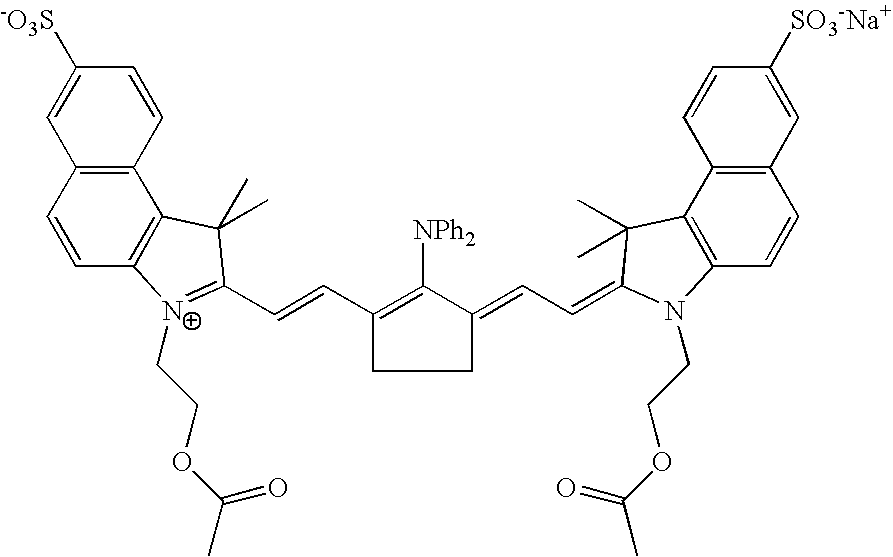Imageable element with solvent-resistant polymeric binder
a polymer binder and imageable technology, applied in thermography, instruments, photosensitive materials, etc., can solve the problem that the printing plate may exhibit a longer press life, and achieve the effect of prolonging the on-press solvent resistance of the resulting printing plate and prolonging the press li
- Summary
- Abstract
- Description
- Claims
- Application Information
AI Technical Summary
Benefits of technology
Problems solved by technology
Method used
Image
Examples
example 1
Synthesis of Copolymer 1
[0094]A mixture of 54 g n-propanol and 16 g deionized water was charged into a 250-mL flask, which was heated to 70° C., purged with a steady flow of N2 gas, and stirred with a mechanical stirrer.
[0095]A mixture of 54 g n-propanol, 16 g deionized water, 10 g PEGMA, 4.5 g styrene, 40.5 g acrylonitrile, and 0.32 g VAZO-64 was prepared in a separate beaker and then added dropwise to the 250-mL flask over a period of 30 min. About 2.5 hours later, 0.16 g VAZO-64 was added to the reaction mixture. The polymerization reaction continued for an additional 2 hours. The resulting polymer solution contained 21 wt.-% solid of Copolymer 1.
example 2
Synthesis of Copolymer 2
[0096]2-Butanone (384.1 g) and 8.5 g PEGMA were charged in a 1-L four-necked flask under N2 atmosphere and heated to 80° C. A pre-mixture of allyl methacrylate (38.0 g) and VAZO-64 (0.3 g) were added at 80° C. over a period of 90 minutes. After the addition was complete, an additional 0.13 g of VAZO-64 was added. Thereafter two additional doses of 0.13 g VAZO-64 were added. The polymer conversion based on percent non-volatiles was >98%.
[0097]In the coating formulations for the following Examples 11-14 and Comparative Example 19, Copolymer 2 is used in addition to Copolymers 1 and 3-7 as a crosslinkable binder.
example 3
Synthesis of Copolymer 3
[0098]A mixture of 15 g PEGMA, 48 g water and 192 g 1-propanol was charged into a 500-mL flask, which was heated to 80° C. In a separate beaker, 66.9 g styrene and 0.48 g VAZO-64 were mixed, and part of this solution (12 g) was added to the mixture in the flask, which became hazy within about 10 minutes. Subsequently, the remaining solution was added to the flask over a 30-min period. After 3 additional hours, the resulting polymer solution contained 25 wt.-% solid of Copolymer 3.
[0099]Copolymer 3 has no pendant cyano group on the hydrophobic polymer backbone. Copolymer 3 is used as a binder in Comparative Example 19 below.
PUM
| Property | Measurement | Unit |
|---|---|---|
| molecular weight | aaaaa | aaaaa |
| molecular weight | aaaaa | aaaaa |
| molecular weight | aaaaa | aaaaa |
Abstract
Description
Claims
Application Information
 Login to View More
Login to View More - R&D
- Intellectual Property
- Life Sciences
- Materials
- Tech Scout
- Unparalleled Data Quality
- Higher Quality Content
- 60% Fewer Hallucinations
Browse by: Latest US Patents, China's latest patents, Technical Efficacy Thesaurus, Application Domain, Technology Topic, Popular Technical Reports.
© 2025 PatSnap. All rights reserved.Legal|Privacy policy|Modern Slavery Act Transparency Statement|Sitemap|About US| Contact US: help@patsnap.com

